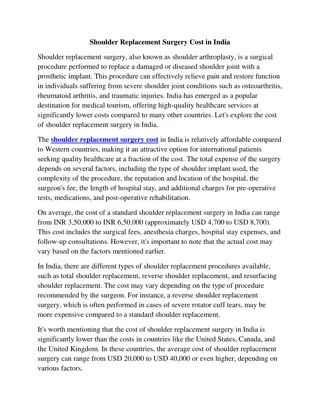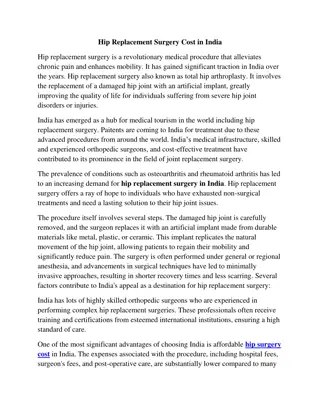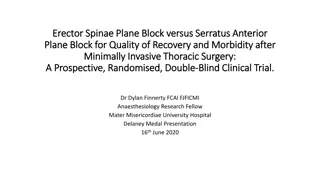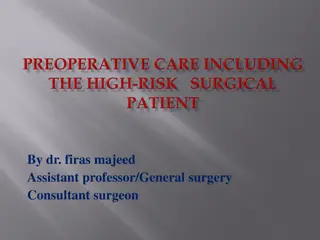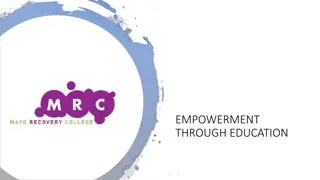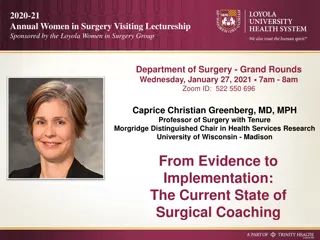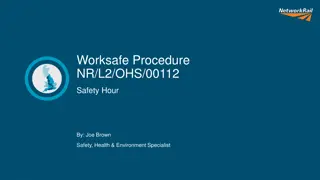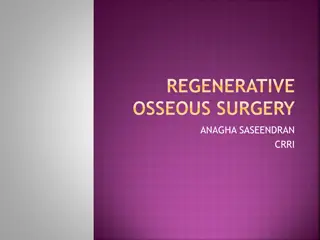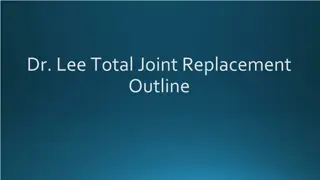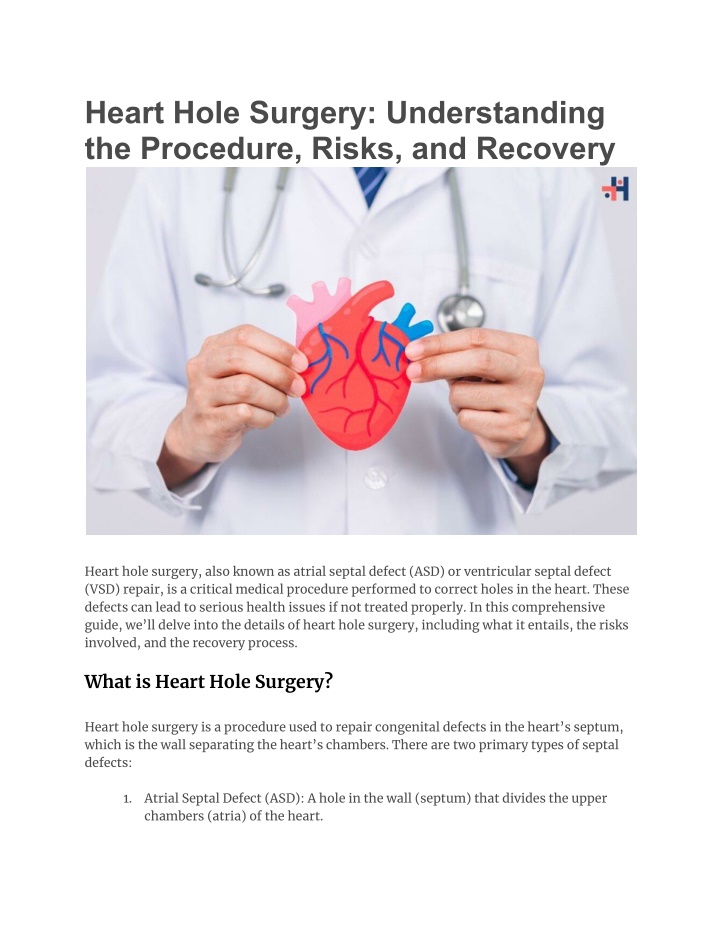
Heart Hole Surgery_ Understanding the Procedure, Risks, and Recovery
In this comprehensive guide, weu2019ll delve into the details of heart hole surgery, including what it entails, the risks involved, and the recovery process.
Uploaded on | 1 Views
Download Presentation

Please find below an Image/Link to download the presentation.
The content on the website is provided AS IS for your information and personal use only. It may not be sold, licensed, or shared on other websites without obtaining consent from the author. If you encounter any issues during the download, it is possible that the publisher has removed the file from their server.
You are allowed to download the files provided on this website for personal or commercial use, subject to the condition that they are used lawfully. All files are the property of their respective owners.
The content on the website is provided AS IS for your information and personal use only. It may not be sold, licensed, or shared on other websites without obtaining consent from the author.
E N D
Presentation Transcript
Heart Hole Surgery: Understanding the Procedure, Risks, and Recovery Heart hole surgery, also known as atrial septal defect (ASD) or ventricular septal defect (VSD) repair, is a critical medical procedure performed to correct holes in the heart. These defects can lead to serious health issues if not treated properly. In this comprehensive guide, we ll delve into the details of heart hole surgery, including what it entails, the risks involved, and the recovery process. What is Heart Hole Surgery? Heart hole surgery is a procedure used to repair congenital defects in the heart s septum, which is the wall separating the heart s chambers. There are two primary types of septal defects: 1. Atrial Septal Defect (ASD): A hole in the wall (septum) that divides the upper chambers (atria) of the heart.
2. Ventricular Septal Defect (VSD): A hole in the wall (septum) that separates the lower chambers (ventricles) of the heart. These defects allow oxygen-rich blood to mix with oxygen-poor blood, causing the heart and lungs to work harder and leading to various complications over time. Symptoms of Septal Defects While some people with septal defects may not experience noticeable symptoms, others might exhibit signs such as: Shortness of breath Fatigue, especially during exertion Frequent respiratory infections Heart palpitations or irregular heartbeats Swelling of the legs, feet, or abdomen (edema) Stroke Diagnosis of Heart Holes Diagnosing a heart hole typically involves several tests and imaging studies, including:
Echocardiogram: An ultrasound of the heart that can visualize the defect and assess its size and impact. Chest X-ray: To look for signs of an enlarged heart or other related issues. Electrocardiogram (ECG or EKG): To measure the heart s electrical activity and detect any irregularities. Cardiac MRI or CT Scan: Advanced imaging techniques to get detailed pictures of the heart s structure. Cardiac Catheterization: A procedure where a thin tube is inserted into a blood vessel and guided to the heart to provide more precise information about the defect. Types of Heart Hole Surgery: 1. Open-Heart Surgery Procedure: This traditional method involves making an incision in the chest to access the heart. The surgeon uses a patch or stitches to close the hole. Advantages: Suitable for large or complex defects and o?ers a direct view of the heart.
Risks: Higher risk of complications due to the invasive nature of the surgery, longer recovery time, and more noticeable scarring. 2. Minimally Invasive Surgery Procedure: Uses smaller incisions and specialized instruments, often involving the use of a robotic system to assist the surgeon. Advantages: Reduced risk of infection, less scarring, shorter hospital stay, and quicker recovery. Risks: Limited to certain types and sizes of defects. 3. Catheter-Based Procedure Procedure: A catheter is inserted through a vein in the groin and guided to the heart, where a device is placed to close the hole. Advantages: Minimally invasive, shorter recovery time, and suitable for patients who may not be candidates for open-heart surgery. Risks: Potential for device-related complications, such as displacement or residual leaks. Preparing for Heart Hole Surgery Preparation for heart hole surgery involves several steps to ensure the patient is in the best possible condition for the procedure:
1. 2. Pre-Surgical Tests: Blood tests, imaging studies, and other diagnostic tests to assess overall health. 3. Medication Management: Adjustments to current medications, including stopping certain drugs that can increase bleeding risk. 4. Lifestyle Changes: Recommendations to stop smoking, improve diet, and increase physical activity. 5. Fasting: Patients are typically required to fast for a certain period before surgery. Medical Evaluation: Comprehensive medical history and physical examination. Risks and Complications As with any surgery, heart hole repair carries potential risks and complications, including: Bleeding Infection Adverse reactions to anesthesia Blood clots Arrhythmias (irregular heartbeats) Residual holes or leaks
Stroke Heart failure Recovery after Heart Hole Surgery Recovery from heart hole surgery varies depending on the type of procedure performed and the individual patient s health. Here s a general outline of the recovery process: Hospital Stay Patients typically stay in the hospital for several days to a week, depending on the surgery type. During this time: Vital signs are closely monitored. Pain management is provided. Physical activity is gradually reintroduced. Instructions on wound care and activity restrictions are given. Home Care Once discharged, patients need to follow specific care instructions: Wound Care: Keeping the surgical site clean and dry, monitoring for signs of infection. Medication: Taking prescribed medications as directed to prevent complications and promote healing. Activity Restrictions: Gradually increasing physical activity as recommended by the healthcare team. Follow-Up Appointments: Regular check-ups to monitor recovery progress and ensure the heart is healing properly. Long-Term Recovery Long-term recovery includes lifestyle changes to promote heart health and prevent future issues:
Healthy Diet: Eating a balanced diet low in saturated fats, trans fats, cholesterol, and sodium. Regular Exercise: Engaging in regular physical activity to strengthen the heart and improve overall health. Smoking Cessation: Avoiding tobacco products to reduce the risk of heart disease. Stress Management: Practicing stress-reducing techniques such as mindfulness, meditation, or yoga. Outlook and Prognosis The outlook for patients who undergo heart hole surgery is generally positive, especially when the defect is detected and treated early. Most patients can return to their normal activities within a few months and experience significant improvements in their quality of life. Regular follow-up care is essential to monitor heart health and address any potential complications promptly. Conclusion
Heart hole surgery is a vital procedure that can significantly improve the lives of those with congenital heart defects. Understanding the di?erent types of surgeries, the preparation involved, potential risks, and the recovery process can help patients and their families make informed decisions about their care. Early detection and treatment are crucial for the best outcomes, making regular check-ups and awareness of heart health essential for everyone.

